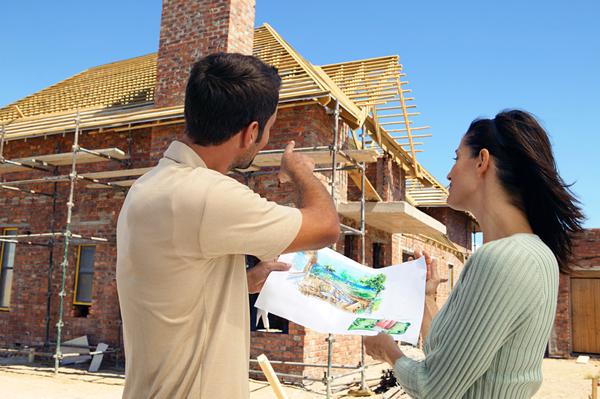You take a Home Construction Loan to construct buildings. These are short-term loans, where the loan amount is disbursed in installments.
Your Home Construction Loan usually requires more time and money to be secured than a regular loan. You’ll also need to provide extra documentation, and pay higher down payments. But there’s a reason: lenders are providing money against an intangible asset.

Here’s some more key information which you should know before you apply for Home Construction Loan and also know how to pick one.
Different Types of Home Construction Loan
- One-time-close Home Construction Loans
They are also called single-close or all-in-one loans. A one-time-close Construction Loan finances the acquisition of the lot and the construction of the home, and serves as long-term financing.
If you have a clear handle on the design, costs, and schedule, this type of loan is best for you. However, if that’s not the case, it is better to avoid it; the terms are not easy to modify.
For Construction Loans, you’ll only have to pay interest on the loan amount that has been disbursed. As construction progresses, the installments are paid, upon reaching a predetermined stage. Therefore, the interest amount increases. After the completion of the building construction, the loan gets automatically converted to a permanent mortgage.
Some of the advantages of this type of loan are:
- This type of loan simplifies the process, and reduces the closing costs, as it has only one approval process and one closing.
- You don’t have to take dual approvals for the construction and permanent financing parts. Approval occurs at the same time for both.
- If your loan has a float-down option, and the mortgage rates have since fallen, you can lower your rate by paying a fee.
- If you had chosen a variable rate over a fixed mortgage rate, then you need to pay the current rate at the time the mortgage converts. You don’t have to pay a fee, if the rates have fallen.This way, it provides flexibility of choosing the rate type, and also to lower the rate.
Some disadvantages are:
- If your expenses cross the construction mortgage amount, you might have to take another loan, and pay closing costs again.
- Compared to a two-time-close loan, permanent rates might be higher.
- Two-time-close Home Construction Loan
It consists of two loans. One loan is for the construction process, and the other is a permanent mortgage loan.
Some of its advantages are:
- Permanent mortgage rates are usually low, compared to one-time-close loans.
- You have the freedom to select different lenders for the Construction Loan and the permanent mortgage loan, to get the best residential Construction Loan rates and terms.
- You can borrow more money, if the need arises during the project.
The disadvantages are:
- You have to get approval and pay closing costs twice.
- If you don’t get approved for the permanent financing, after completion of constructing building, you are likely to face foreclosure.
- Your circumstances might change when you apply for permanent financing, and thus risks increase.
Depending on the factors that are more important to you, you need to select one from the different types of Home Loans. One-time-close construction loan saves time and money on closing costs, whereas two-time-close construction loans saves money on permanent financing.
Regarding flexibility, one-time-close loans provides multiple choices for permanent financing. Two-time-close loans provide improved flexibility to modify the project and borrow more money.
Furthermore, you might face foreclosure, if you don’t get approved for permanent financing, in case of two-time-close loans.
However, they do have some similarities. A down payment of at least 20% needs to be paid in both the cases. You need to pay interest only on the amount that has been disbursed. Moreover, both the builder and the borrower need to be approved by the lender.

